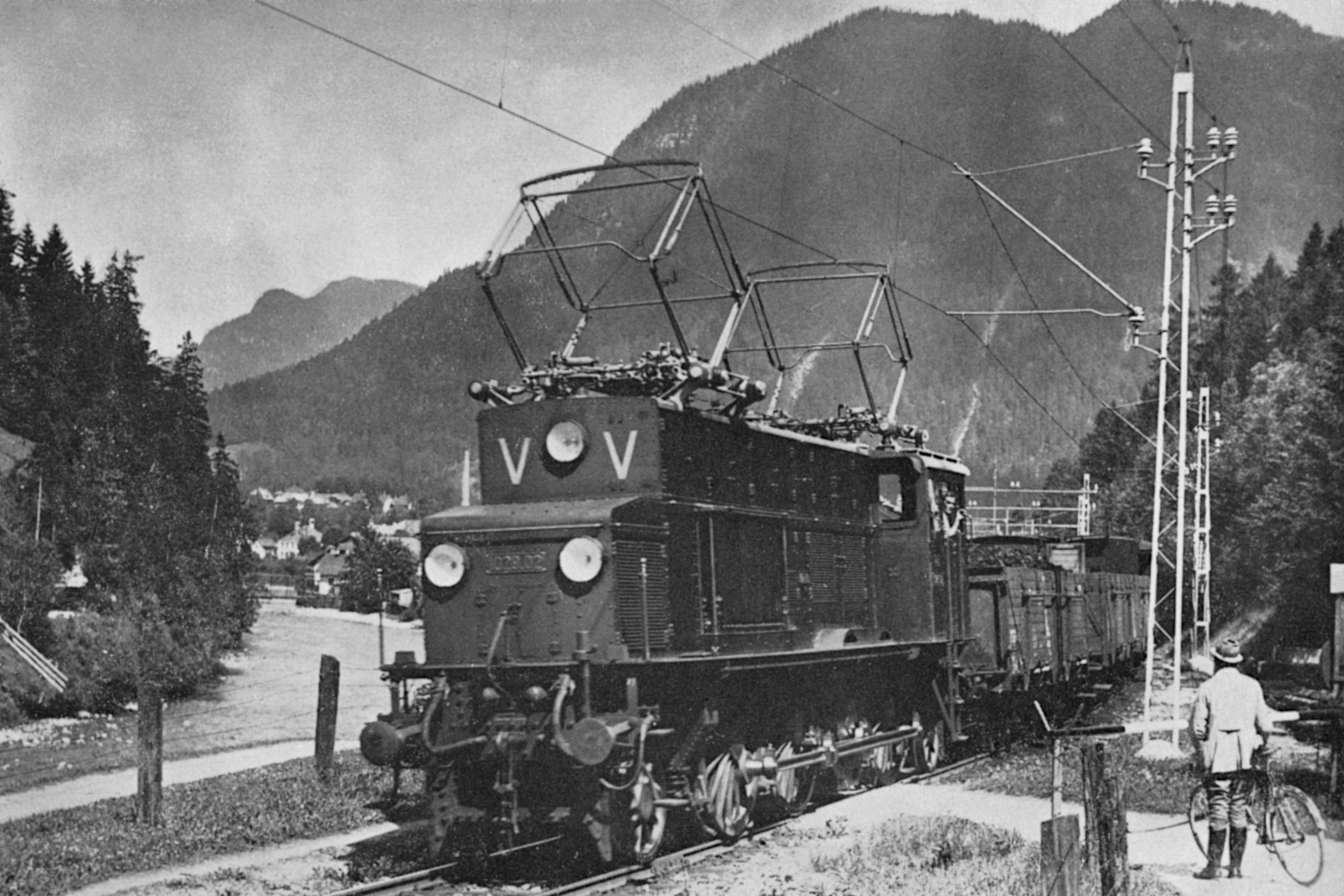
1923-1938
How it all began
Electrification, Austrofacism and travel boom: ups and downs.



Austrians ride electric railways.
Following the dissolution of the monarchy, Austria's primary objective was to attain independence from foreign coal. In pursuit of this goal, the "electrification programme" for railway lines was initiated in 1920, even including the establishment of a dedicated "electrification office". As part of this endeavour, power storage stations were constructed to convert water power into electric energy, which in turn powered the overhead lines enabling the operation of electric locomotives. The plan aimed to relegate coal-fired steam locomotives to obsolescence, with electrified railways representing a promising future. Not only did this transition liberate the country from reliance on foreign coal, but it also facilitated the adoption of more modern, faster and higher-capacity trains compared to their coal-dependent predecessors.

The plan did not proceed as swiftly as anticipated. By the time the Austrian Federal Railways were established in 1923, there were only 80 kilometres of electric railway in operation. This included a 25-km stretch in the Inn Valley and the 65-km Mittelwaldbahn, constructed in 1912 to connect Innsbruck with Garmisch-Partenkirchen in Bavaria, Germany. These mountainous routes drew their energy from hydroelectric power plants in Tyrol and Vorarlberg. Even though these routes were relatively short, they demonstrated significant potential for cost savings, as the steep gradients and challenging terrain necessitated substantial coal consumption for steam locomotives.





In the following years, electrification gained more momentum. In 1924, stand-alone electric operation commenced on the Salzkammergut line "Attnang-Puchheim to Stainach-Irdning", followed in 1925 by continuous electric operation over the Arlberg pass, between Bludenz and Innsbruck. In the same year, the valley lines of the Brenner and lower Inn were electrified, after ÖBB had taken them over from private operator Südbahngesellschaft. With its political influence, the coal lobby managed to delay the modernisation, but there was no holding it back.

By 1930, the "Brenner – Innsbruck – Kufstein" and "Wörgl – Salzburg" lines were put into operation, and in 1933 the electrification of the Tauernbahn from Schwarzach St. Veit to Spittal-Millstätter See was finally completed. In the end, it only took ten years to expand the original 90 kilometres of electrically operated lines to a considerable 883 kilometres, including the construction of new power stations. Running on those lines were a large number of electric locomotives produced in Austria, transporting travel-eager passengers from A to B.

Cover photo: BBÖ 1029.02 with goods train at Bad Aussee station. © Josef Stögermayer
Unless otherwise indicated, the image rights are held by © ÖBB Infra.